
Ticket
Likely to sell outTicket Ballenberg
Validity: All day
booked 471 times
In the Bernese Oberland in Hofstetten between Brienz and Meiringen lies a place with a lot of historical speciality: We are talking about the Ballenberg, the unique open-air museum of Switzerland.
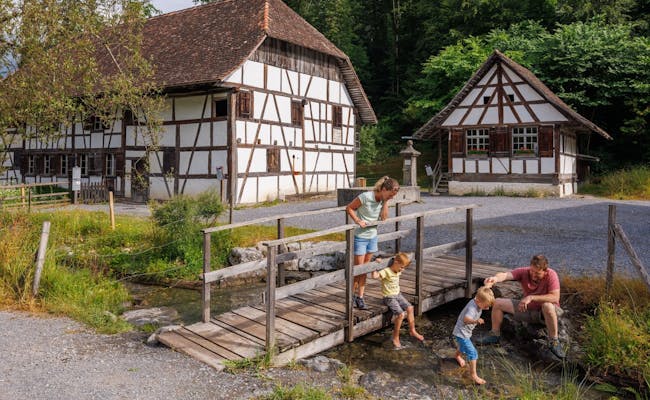 Familienausflug (Foto: Ballenberg)
Familienausflug (Foto: Ballenberg)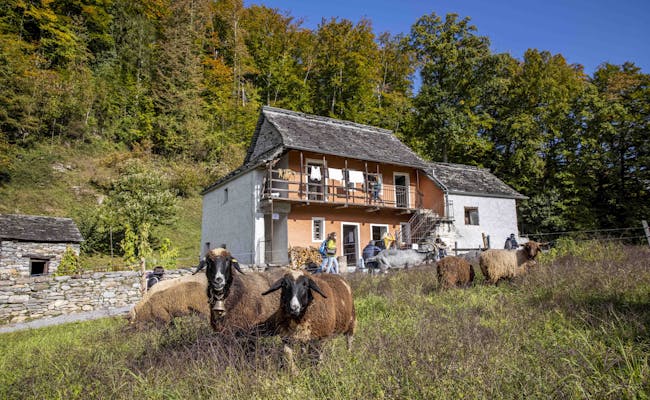 Bauernhaus mit Tieren (Foto: Ballenberg)
Bauernhaus mit Tieren (Foto: Ballenberg)Old buildings such as farmhouses, multi-purpose buildings, barns or stables were dismantled piece by piece and rebuilt near Brienz. Meanwhile, the open-air museum covers 66 hectares of buildings and memories from all over Switzerland. At this special place you will dive into Swiss cultural history. You will embark on a unique voyage of discovery into the past.
The open-air museum is located on the eponymous Ballenberg above the Aare Valley near Brienz. The grounds are filled with various architectural buildings, 250 farm animals and impressive gardens. There are also regular events and unique courses.
Swiss Activities Offer:
 Sonderausstellung Schwingen (Foto: Ballenberg)
Sonderausstellung Schwingen (Foto: Ballenberg)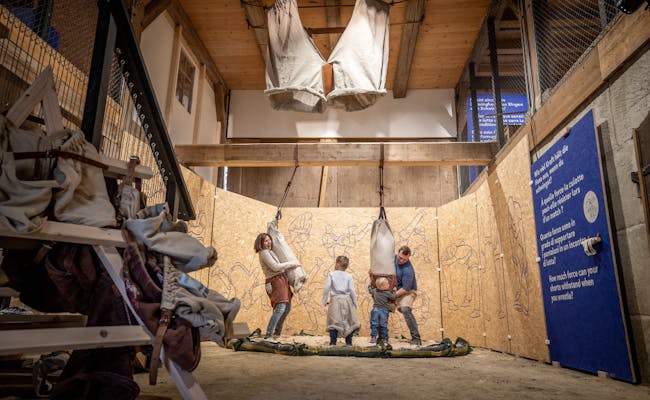 Sonderausstellung Schwingen (Foto: Ballenberg)
Sonderausstellung Schwingen (Foto: Ballenberg)At Ballenberg, you will discover more than 100 residential and farm buildings from different periods and in a wide variety of architectural styles. Among other things, you can visit craft buildings, farmhouses, stables, barns, bakehouses and granaries from various places in Switzerland. All of them were quarried stone by stone and rebuilt here in the Bernese Oberland.
As you tour the buildings, you'll learn interesting facts about the building materials used and the different architectural styles. People worked mainly with clay, lime and wood to build their houses between the 14th and 19th centuries. They processed these materials in the brickyard, the sawmill and in the rope factory.
There are also great buildings in the form of half-timbered or log buildings. In the economic buildings you can marvel at various cellars that were used to store vegetables, fruits and other foodstuffs. These include: Cold and earth cellars, drying kiln, Tresterschopf as waste utilization and cheese and grain stores.
The roofs of the houses also differ in their materials. Some are covered with straw and others with wooden or stone shingles. At the beginning of the 19th century, people increasingly used tiles.
Inside the houses you can see exciting information about housing, ventilation and heat exchange. The orientation of the rooms and the placement of the heating stoves in the center of the house for ideal heat distribution played a major role. Shutters to open and close were mainly used to keep out the cold.
 Häuser Schwiez (Foto: Ballenberg)
Häuser Schwiez (Foto: Ballenberg)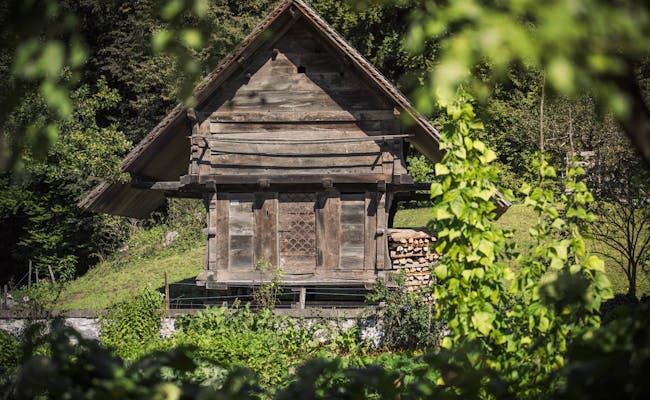 Kornspeicher (Foto: Ballenberg)
Kornspeicher (Foto: Ballenberg)More than 30 traditional crafts have been brought back to life in the open-air museum. You will have the opportunity to see and learn about the diligence and spirit of these traditional crafts. These include spinning, carving, basketry, pottery, medicine making and weaving.
Food production:
Home food production used to be very important in order to provide food for one's family. Baking was usually done in bakehouses in the community or on larger farms in their own bakehouse. In the museum you can see such a bakehouse and watch a baker making loaves of bread.
You will also have the opportunity to visit an old alpine cheese dairy, where cheese is made in the traditional way almost every day. You will see traditional cooking and the procurement and processing of food in several buildings at Ballenberg. You will learn how much effort it took to stockpile and procure food.
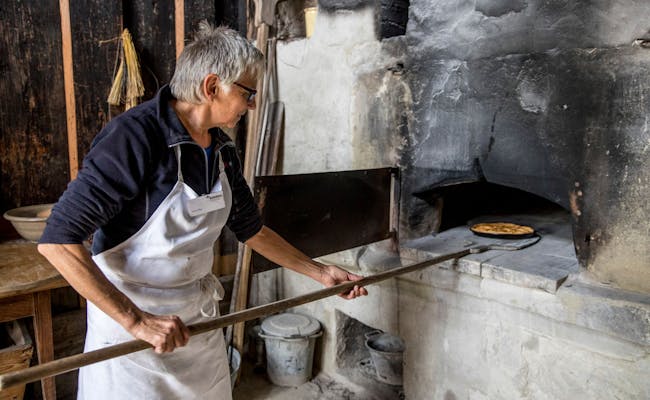 Backen (Foto: Ballenberg)
Backen (Foto: Ballenberg)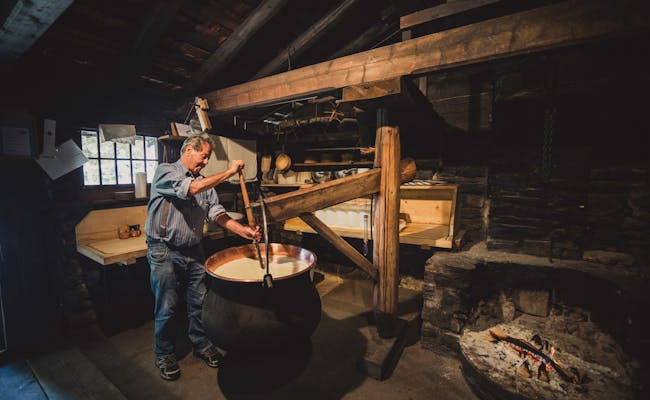 Käserei (Foto: Ballenberg)
Käserei (Foto: Ballenberg)Crafts with needle and thread:
Work with needle and thread used to be very important in every household and part of everyday life. At Ballenberg you will be immersed in traditional crafts such as sewing, weaving, roping and knitting. Here you will be shown how fabrics, tablecloths and yarn were made in domestic work in earlier times.
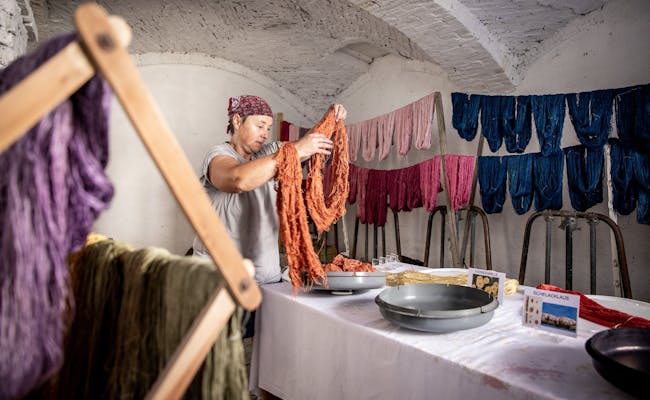 Seide (Foto: Ballenberg)
Seide (Foto: Ballenberg)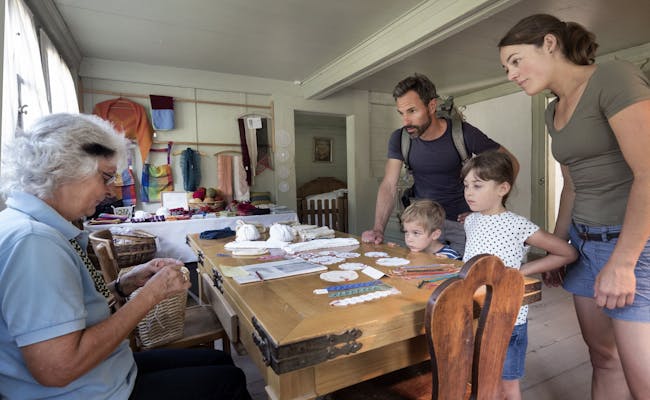 Stricken und Häkeln (Foto: Ballenberg)
Stricken und Häkeln (Foto: Ballenberg)Working with natural materials:
Processing natural materials was part of daily tasks in the past. Everyday objects were made and used independently. In Ballenberg you can visit a complete hatter's workshop or watch the production of traditional medicines with herbs. The museum also offers many other exciting handicrafts for you to visit:
 Töpferei (Foto: Ballenberg)
Töpferei (Foto: Ballenberg)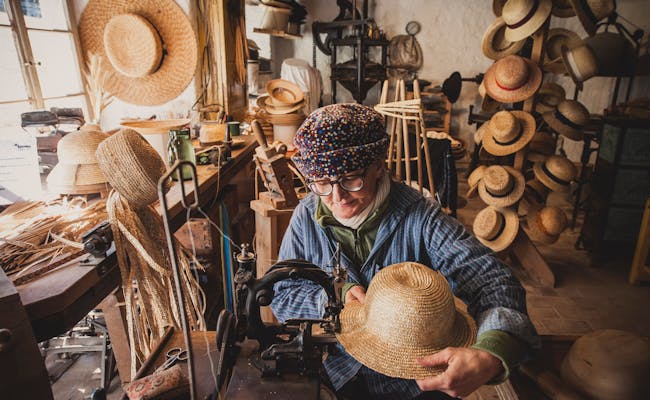 Hutmacherei (Foto: Ballenberg)
Hutmacherei (Foto: Ballenberg)For children, a trip to Ballenberg is a unique nature experience. There are a total of over 250 farm animals to discover. These are mainly animals that have lived on the farm as farm animals since the 14th century. The animals on site have been at Ballenberg since 1996. Informative panels at the enclosures give you a closer look at the animals on the grounds. These include:
For more than 25 years, a support association has been committed to the large number of farm animals at Ballenberg. The focus of the support is on respectful behavior and a teaching of values in dealing with the animals.
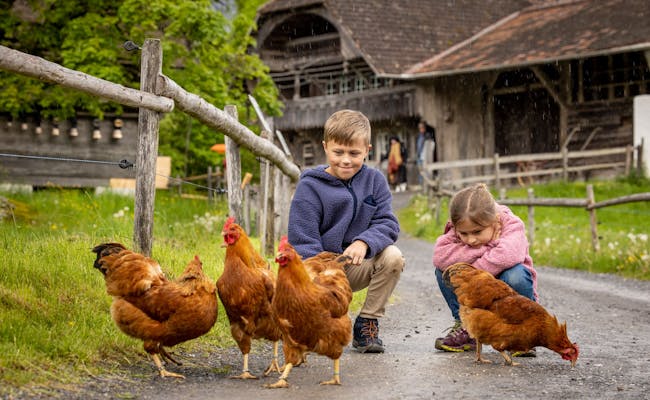 Hühner (Foto: Ballenberg)
Hühner (Foto: Ballenberg)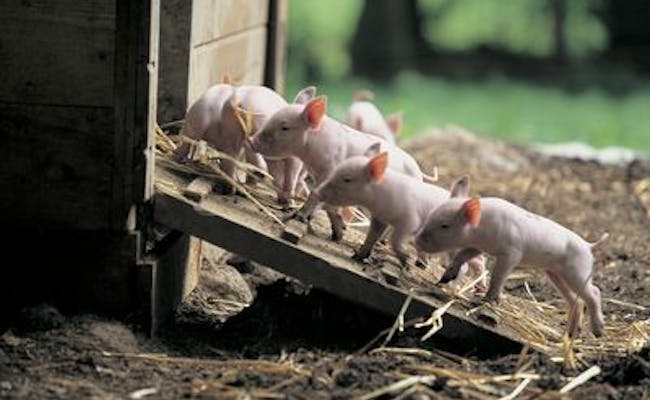 Ferkel (Foto: Ballenberg)
Ferkel (Foto: Ballenberg)Stories of a costume
In this exhibition you will get a true insight into the craft of making the traditional costume. The production requires a lot of knowledge, experience and skills and was perfected by the old craftsmen and women over many years.
House from mats
The house from Matten dates back to the 16th century and was rebuilt in Ballenberg as an example of the living needs of a family of four in our time. In this exhibition you will encounter an interesting tension between renewal, innovation and tradition.
Naturopathy/Drugstore
In this exhibition you will learn everything about the history of naturopathy and drugstore. In the past, ointments and tinctures were made by a druggist himself, but over time more and more ready-made products were sold. Immerse yourself in the development of naturopathy and learn how it is today
Swiss tradition
In this exhibition you will experience the noble living world of the 19th century. Learn about the production and development of traditional costumes and traditional musical instruments. In the manufactor's villa from Burgdorf you can not only look but also listen to the sounds of traditional folk music
brickyard from Pery
Experience a historical brickyard and discover the traditional brickmaking craft. In the exhibition you will learn how the craft was practiced in the Jura in the 19th century. Watch as the master craftsman fires the clay and makes weather-resistant bricks.
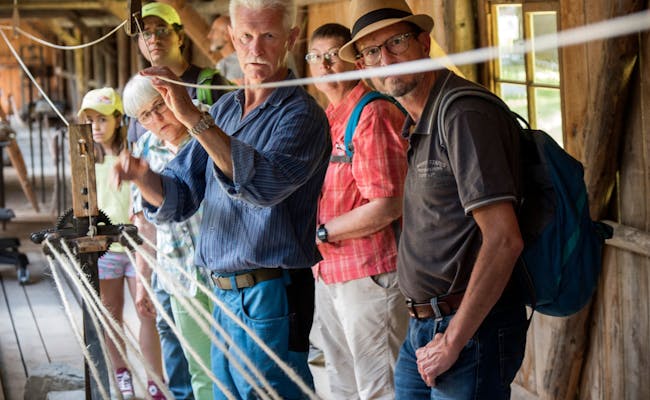 Seilerei (Foto: Ballenberg)
Seilerei (Foto: Ballenberg)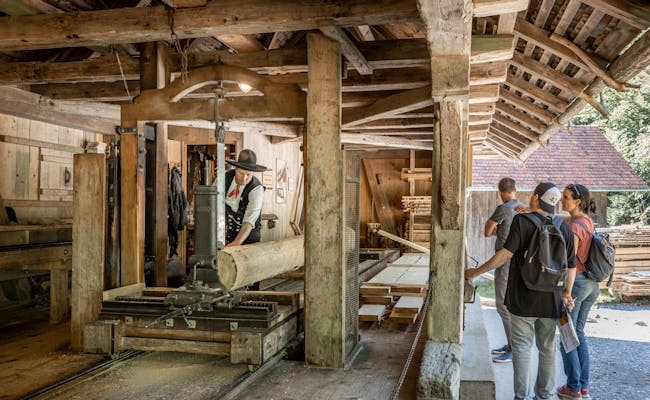 Schreinerei (Foto: Ballenberg)
Schreinerei (Foto: Ballenberg)More exhibitions
The Ballenberg store offers a great opportunity to buy beautiful souvenirs and handmade gifts. All products are directly from Ballenberg and make a great souvenir or an exceptional gift. In addition to a drugstore, there is also a vegetable sale, homemade goods, a kiosk and the Märithüsli
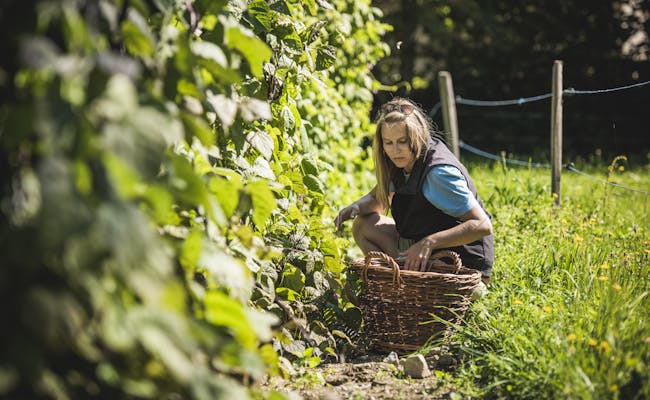 Landwirtschaft (Foto: Ballenberg)
Landwirtschaft (Foto: Ballenberg) Landwirtschaft (Foto: Ballenberg)
Landwirtschaft (Foto: Ballenberg)In Ballenberg there are more than 100 residential and farm buildings from all over Switzerland. Whether small alpine settlements, large farmhouses, stables, granaries, barns, wash houses, handicraft houses or drying kilns - the buildings are special contemporary witnesses of the everyday life of old times.
The buildings are arranged on more than 66 hectares according to region of origin, so the past is reflected very authentically and you automatically dive into past times of the different regions of Switzerland.
The Jura heights stretch along the western border of Switzerland and are divided into Faltenjura and Tafeljura. Faltenjura is the name given to the rugged and mountainous area of the Jura with many individual farms and villages. From this region you can admire a large farmhouse with a cistern and a granary from Montsevelier. The Tafeljura is the lower lying area in the northern part of the Jura. From this region you can find another farmhouse, a traditional multi-purpose building.
The Central Plateau stretches between Lake Geneva to Lake Constance. The area is characterized by a mix of urban and rural areas as well as industry and agriculture. In Ballenberg there is, among other things, a typical stone dwelling house, an old wooden farmhouse and a special pigsty.
The Bernese Mittelland stretches from Lake Thun to Wynau, and from Lake Murten to the border with Lucerne. In Ballenberg you will find 17 different buildings dating from the 17th century to the 1900's. Here you can discover many different buildings such as sod well houses, farmhouses, granaries, cheese stores and much more.
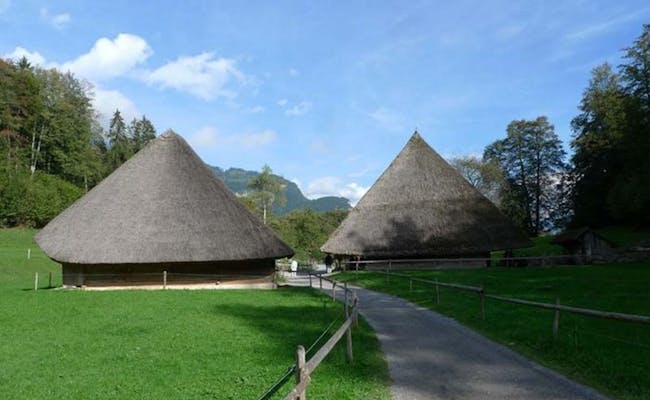 Häuser Zentrales Mittelland (Foto: Ballenberg)
Häuser Zentrales Mittelland (Foto: Ballenberg) Häuser Zentralschweiz (Foto: Ballenberg)
Häuser Zentralschweiz (Foto: Ballenberg)In the Brandboden area in Ballenberg you will find everything that has to do with wood, forest use and fire. You can visit the reconstruction of a lime kiln and a wood burning kiln. There are also two other buildings for the craftsmen. Everything is in a style from the 18th/19th century.
Western Switzerland consists of the cantons of Vaud and Fribourg. In Ballenberg there are six different buildings to admire, which reflect the past life of this region. Various farmhouses, a granary and a multipurpose building have been rebuilt here.
In the open-air museum you will find the cantons of Thurgau, Zurich and Schaffhausen in the eastern Mittelland. In total you can look forward to 13 different buildings from the 15th to the 19th century. Admire among other things buildings in half-timbered style and different style mixes.
Central Switzerland comprises the cantons around the Lake Lucerne. This region is mainly characterized by the building material wood. In addition, you will find many separate buildings instead of the otherwise often built multi-purpose houses. In Ballenberg there are 11 different buildings from the 16th to the 19th century.
Ticino is geographically one of the most varied cantons in Switzerland. In the southern part is Lake Maggiore. In the northern part there are many mountain villages that are still above 1500 meters above sea level. From this canton there are 10 special buildings from the 16th to the 19th century in Ballenberg.
Eastern Switzerland comprises the half-cantons of Appenzell Innerrhoden and Ausserrhoden as well as St. Gallen and Thurgau. The Appenzell region in particular is very alpine in character and is known as the alpine dairy region. Also the embroidery of St. Gallen is well known and has a worldwide reputation. In the Ballenberg you will find three buildings from eastern Switzerland, which testify the beginnings of these industries.
 Häuser Ostschweiz (Foto: Ballenberg)
Häuser Ostschweiz (Foto: Ballenberg)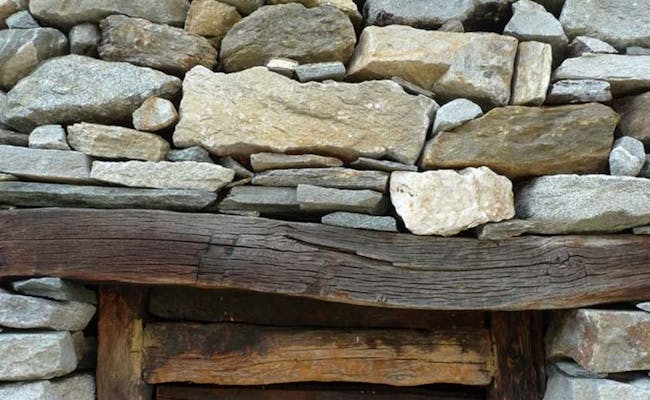 Häuser Tessin (Foto: Ballenberg)
Häuser Tessin (Foto: Ballenberg)The Bernese Oberland has been one of Switzerland's most popular tourist destinations for almost 200 years. In Ballenberg there are 14 different buildings that document the history of the Bernese Oberland. They attracted visitors many years ago.
The Valais is characterized by the block building style. This building style can be found in the valleys as well as in the alpine zone. In Ballenberg you can see, among other things, a dwelling house from 1568 and an 18th century hay barn from Blatten.
Graubünden is the largest canton in Switzerland and thus offers a very varied building landscape. In Ballenberg, the area is still being developed, but you can already visit a hay barn from 1780 from Vals.
The Ballenberg offers an incredibly wide range of courses. You have the opportunity to learn any craft and immerse yourself in the daily work of yesteryear.
The subject area Imaging and Exposure is all about the art of photography. In five different courses, you can immerse yourself in the evolution of photography and learn the craft. There are courses such as 19th Century Photography, Analog Photography, Fine Print, or Pinhole Camera Construction.
Here you can learn skills such as gardening and composting, shingling, mowing, log cabin building, dry stone walling, and well building. There are a total of nine different courses in this subject area.
Bending and Fourniering includes ski, snow and splitboard making. Here you have the opportunity to participate in the courses building skateboards and building skis, snowboards or splitboards.
In the subject area of folding and binding you will find many courses. Here it is about bookbinding, folding origami and book objects, printing or making boxes. There are seven different courses in which you can try out and learn an exciting craft.
Dyeing and painting includes a wide range of different techniques such as varnishing, printing and surface finishing. Learn Ticino blueprinting or take a taster course on Japanese ink painting. There are a total of eight different courses.
This subject area is all about making different objects. In 14 different courses, you'll learn crafts like pottery making, yarn painting, pottery, hat making, and shoe making.
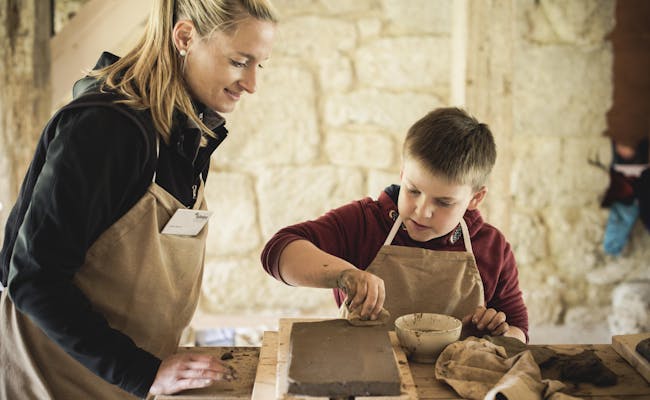 Handwerk Feuer und Flamme (Foto: Ballenberg)
Handwerk Feuer und Flamme (Foto: Ballenberg)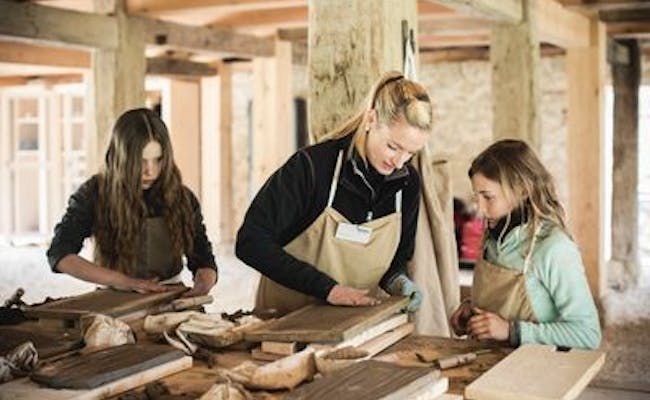 Handwerk Ziegeln (Foto: Ballenberg)
Handwerk Ziegeln (Foto: Ballenberg)Pouring and Eating includes courses on tobacco and dough. Learn how to bake with dough and wood or take part in a tobacco and pipe seminar. In all, you'll find four different courses in this subject area
Glassmaking and firing deals with the topics of glass, glassmaking, lead glazing and charcoal burning. Here you can take a taster course in leaded glass or a glassmaking Christmas special, among other things. There are a total of six different courses in this subject area.
In this subject area you will dive into the world of sewing and knotting. Here you will be offered a large amount of different courses. For example, you can learn sewing, embroidery, filleting, tying, button making, saddlery and furriery. In total there are over 20 courses waiting for you
Here you will learn everything about upholstery. You can participate in a basic course on upholstery or various upholstery projects. There are four different courses in total
In this subject area, you will get a taste of the Appenzell craft of chasing. You can choose between a standard and an intensive course
There are great projects on the subject of restoration and conservation. You bring your own personal object, for example a chair, table or cabinet, and learn how to professionally restore old furniture
In this subject area there are exciting courses such as bow making, vending machine making, carpentry, instrument making and tobacco hoop making. In total, you can look forward to eight different courses.
You have a wide choice of courses such as forging knives, hammers, hatchets or taster courses on welding or goldsmithing. In 10 different courses you have the opportunity to learn the special crafts.
In this subject area everything revolves around the raw material wood. Learn how to process wood in various courses. These include carving with a pocket knife, fresh wood turning, wood image making and wood turning and varnishing. There are 14 different courses in total
Immerse yourself in the art of writing and cutting and learn the special handling of pen and scissors. Exciting courses such as calligraphy, lettering, scissor cutting and sack painting await you in this subject area. There are five different courses in total
This subject area gives you a great insight into the craft of spinning. You can take four different courses to learn the crafts with thread.
Get a taste of the world of weaving and braiding and make great products. Among other things, you can participate in exciting courses such as ropes, weaving, braiding and bobbin lace
The Knowledge and Skills subject area teaches you various things such as herbalism, making ointments, poultices and compresses, scrying and sharpening knives and scissors. In total, you can look forward to 13 exciting courses.
 Wohnhaus (Foto: Ballenberg)
Wohnhaus (Foto: Ballenberg)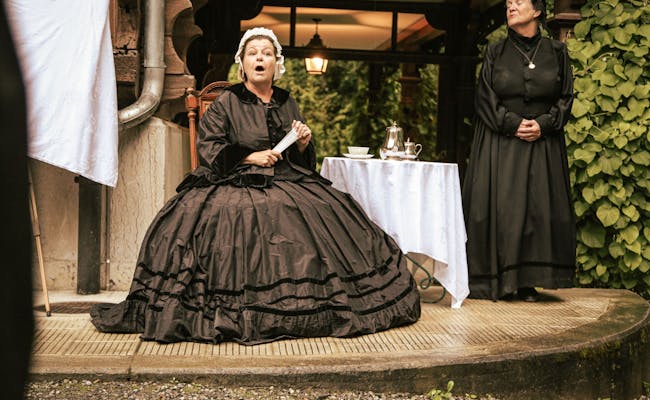 Zunder und Plunder (Foto: Ballenberg)
Zunder und Plunder (Foto: Ballenberg)Allow enough time
The Ballenberg open-air museum extends over 66 hectares. Therefore, bring enough time to be able to visit the entire museum at your leisure. You should plan a whole day for it.
Foxtrail at Ballenberg
Do you feel like a scavenger hunt of a very special kind? The Foxtrail in the open-air museum is an exciting trail. Solve fun riddles and decipher secret messages to get on the right track and track down the fox.
Grand Tour of Switzerland
Take the perfect souvenir photo at the famous Grand Tour photo spot in Ballenberg. Here you have a great view and can collect another Grand Tour of Switzerland photo.
Drugstore
During your visit to Ballenberg, be sure to visit the drugstore with its herb and fragrance garden. You will be delighted with a great selection of teas, liquorice, pastilles, honey and many other healthy products. You can admire the medicinal herb garden here
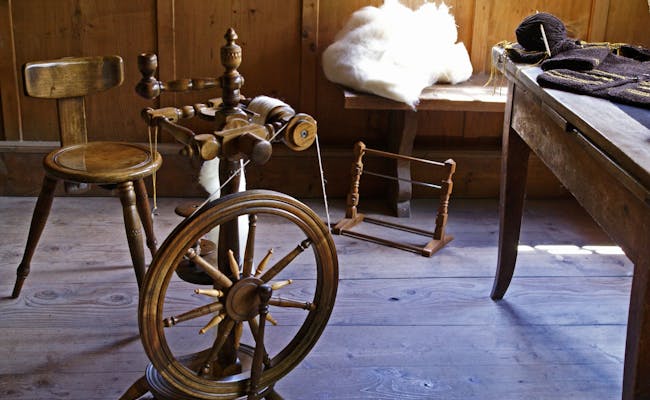 Handwerk Wolle Spinnen (Foto: Ballenberg)
Handwerk Wolle Spinnen (Foto: Ballenberg)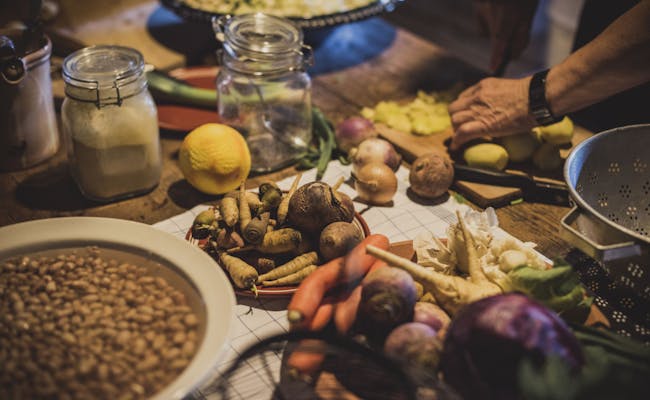 Handwerk Kochen (Foto: Ballenberg)
Handwerk Kochen (Foto: Ballenberg)You have the possibility to stop at different restaurants in the open-air museum. But you can also get a small snack at various snack stands. In addition, there are many tables and benches that invite you to a cozy picnic in the open air
The season starts in mid-April and runs until the end of October. During this time the museum is open daily from 10:00 to 17:00. The offered courses take place all year round
 Gastronomie (Foto: Ballenberg)
Gastronomie (Foto: Ballenberg)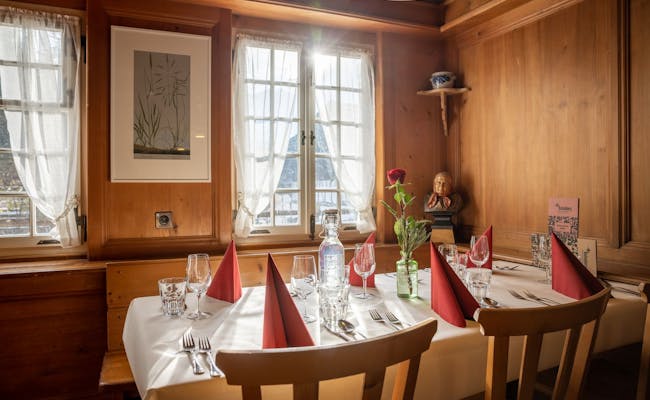 Gastronomie (Foto: Ballenberg)
Gastronomie (Foto: Ballenberg)The Ballenberg Open Air Museum is located in the Bernese Oberland near Brienz. It is easy and uncomplicated to reach by car as well as by public transport.
By car, Ballenberg can be reached quickly and easily from all directions. Among the most uncomplicated connections are the following routes:
Parking is available for a fee at both entrances to the museum.
With the Zentralbahn from Lucerne or Interlaken you can go directly to Brienz or to the Brünig. From these stations there is a bus service to both entrances of the museum.
 Laden (Foto: Ballenberg)
Laden (Foto: Ballenberg)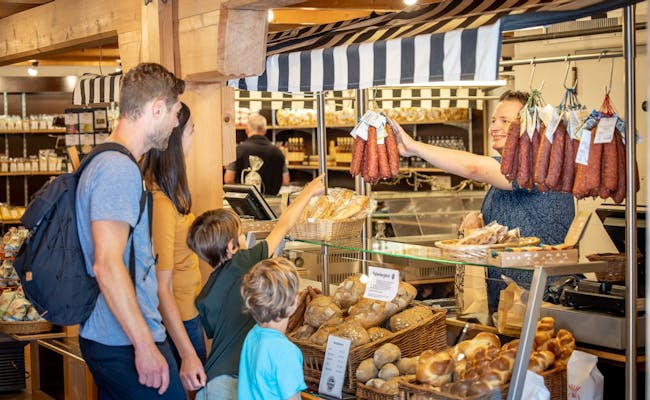 Laden (Foto: Ballenberg)
Laden (Foto: Ballenberg)